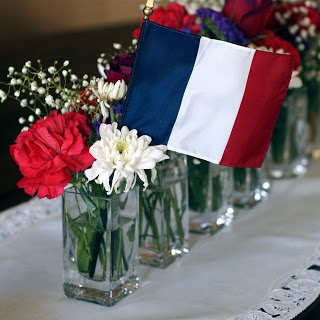
Superfluous piece of information for the benefit of readers who stumbled upon this blog in a completely unrelated search: Bastille Day, also known as La Fête Nationale or Le Quatorze Juillet, is a French national holiday that marks the anniversary of the storming of the Bastille (prison) in 1789 and the symbolic birth of modern France. It is celebrated on July 14th with fantastic pomp and circumstance in France, in many cities around the U.S., and in our home.
Yesterday was Bastille Day. I know I should have been thinking red, white and blue—thick swaths of each color—as I arranged our small French Tricolors around the dinner table, listened to French CDs, chopped fennel, onion and parsley for our soupe de poisons aux tomates avec rouille, and selected the wines that we would later fill our glasses with and raise in toast to a country we like so much.
But, I have to confess I was thinking pink, white and blue. I knew we would be opening one of our rosés from Château Constantin-Chevalier: a 2009 Pétale de Rosé. Regular readers will recall that we were thrilled when we happened upon a 2011 Pétale de Rosé from this small chateau when we had brunch in a popular French restaurant, Café Cluny, in the West Village of Manhattan.
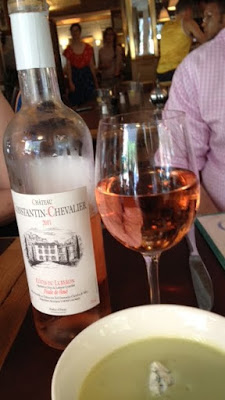 |
| Brunch at Café Cluny: 2011 Château Constantin-Chevalier Pétale de Rosé |
This rosé is a relatively new addition to the wines produced by Château Constantin-Chevalier, the second of two rosés. Peter Mayle refers to it as “Rosé’s Younger Sister.” Although both rosés are made from the same grapes—Syrah and Grenache—the newer wine is paler in color due to its shorter maceration (i.e., contact with the grape skin). According to Mr. Mayle, the skills of today’s winemaker enable these paler rosés to retain “the traditional attributes of a real wine.” We would have to agree.
The wine is a lovely pale rose color. We found it to be full and interestingly flavorful. It had a distinct berry aroma—my husband thought raspberry and I thought blackberry—and we both found it crisp, dry, light, and exceptionally refreshing on that hot Sunday afternoon. It was a perfect choice for the brunch we ordered. It held its own with my husband’s short-rib hash but was also a lovely compliment to the cucumber and avocado soup, and the salads my daughter and I ordered. Mr. Mayle’s says…
that it has “enough complexity of flavor to be satisfying on its own.” (Fortunately, we had a bottle—of a different vintage—at home and would be able to see for ourselves if Mr. Mayle is correct. I suspect he is.)
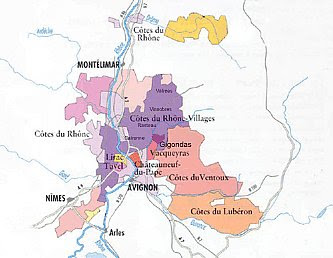 |
| Côtes du Luberon lies in the Southeast corner of the Rhone region |
Château Constantin-Chevalier lies in the heart of the Appellation d’Origine Controlée (AOC) called Côtes du Luberon. (In 2010, the AOC will be shortened to Côtes Luberon.) It is a relatively new AOC, created in 1988, that lies in the southeastern part of the Rhone region. It is approximately 3200 hectares (7900 acres) in production size—about the size of Châteauneuf-du-Pape. It produces more wine than that renowned Châteauneuf-du-Pape because as much as 80% of the Côtes Luberon wine is produced in cooperatives. The increasingly impressive advances in the quality of the wine from Côtes Luberon have been driven by a few passionate and talented independent wine makers that are establishing an excellent reputation.
Thirty-six communes—all in or around the Luberon Natural Forest—comprise this AOC. Lourmarin, our favorite village, is one of them and, in fact, the cooperative in this village is producing some wines that have people in the know talking…and drinking!
It is on the outskirts of the picturesque village of Lourmarin, on the way to Cadenet, that you will find this lovely château. From Lourmarin, take D27 toward Lauris. Take a left on to a very narrow lane that passes for a road (D139), lined on one side by a field of sunflowers and rows of grapevines and on the other by a forest of oak and olive trees. Up above the skinny lane stands the impressive 16th century estate. The setting is lovely. The grounds are tranquil. The château is elegant and stately.
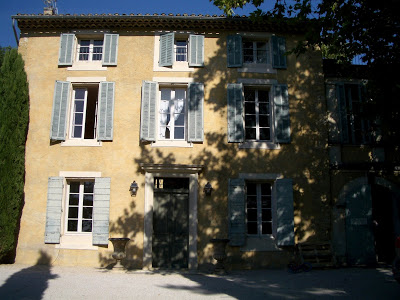 |
| Château Constantin-Chevalier Photo: Mark Sammons |
Red wine dominates the production in Cotes Luberon—70%–with the remaining proportion composed of white or rosé. Syrah is the most widely used variety here, followed by Grenache, Mourvedre, Cinsaut, and Carignan. White wines are typically produced with a combination of Grenache Blanc, Clairette, Bourboulenc, Ugni, and Vermentino; Marsanne and Roussanne grapes may be included, too.
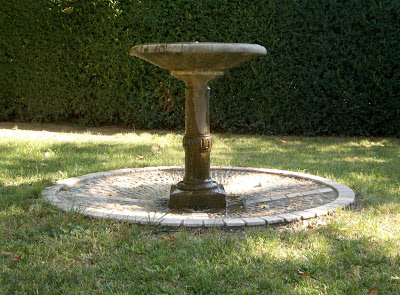 |
| Château Constantin-Chevalier Grounds Photo: Mark Sammons |
Rosé wines may be made with any of the red grape varieties mentioned above although 20% of the white varieties listed about may also be included.
But, I digress. Back to our dinner on Bastille Day.
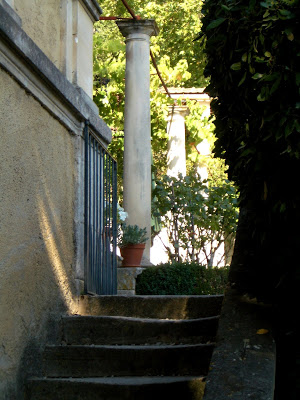 |
| Château Constantin-Chevalier Grounds Photo: Mark Sammons |
Our 2009 Pétale de Rosé—composed of equal parts of Syrah and Grenache—represented its origin with great aplomb. Like its younger 2011 sibling, it was crisp—“clean” my husband said—and dry but surprisingly substantial. It titillated our senses! Although the taste of berries resonated from nose to mouth, there was no trace of sweetness (that some rosés from areas other than Provence often suffer from). Every taste was filled with flavor, delicate but strong enough to match our Provençal-style fish soup. Delicate but strong enough to remind us who stormed the Bastille, some 223 years ago, as we raised our glasses—Salut!
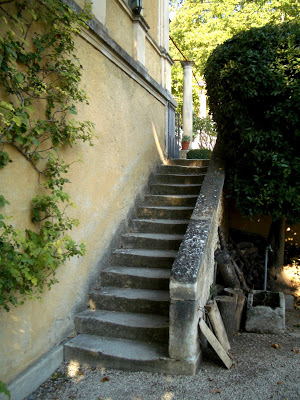 |
| Château Constantin-Chevalier Grounds Photo: Mark Sammons |
And, yes, Peter Mayle was right: it is definitely satisfying on its own.
I have visited Château Constantin-Chevalier several times. I had the pleasure of meeting Allen Chevalier, who with his wife Marie-Laure, bought the Château in 1990 with the goal, I am told, of making the best wines they could. Their dedication, I am told, transformed the winery into what we see today. Although I am always raving about their rosés, it is their wonderful white wine that has garnered the most attention, with many awards of distinction.
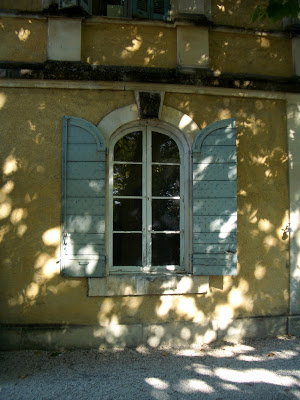 |
| Château Constantin-Chevalier Photo: Mark Sammons |
Sadly, Monsieur Chevalier passed away a year ago. We hope that whoever has purchased Château Constantin-Chevalier will keep the dreams of this family alive.
Let’s raise another glass. A salute to the Chevaliers who produced these rosés we have loved so much.
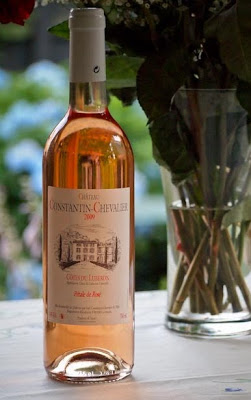 |
| 2009 Château Constantin-Chevalier |
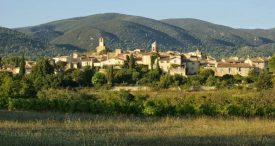






Thanks for another wonderful read from The Modern Trobadors! It's a very sunny, very HOT Sunday in Malta…and I'd dearly love to be lifting a glass of that lovely rose with my Sunday Brunch. Your description of the chateau and its rose wines reminded me of my first introduction to roses (too many decades ago) and how pitifully poor they were – sweet+simple in the worst possible way – and how wonderfully the quality has improved in the production of roses since then! Enjoy!!! : )
Lovely article, Susan!
Jenny
i so enjoyed this piece — summertime in all its splendor! plus the wonderful information you always have to share. GG
Looking at Mark's photos really takes me back to the day we visited the chateau. I remember my first taste of this particular rosé's older sister (thank you, M. Mayle!) – the distinct, surprising yet not unwelcome flavor of banana hit my taste buds. We liked it so much that we even brought home two bottles to the U.S., for which we were glad when we opened them the next summer.
I do hope the new owners continue the tradition of fine wines, especially the rosés…
Speaking of rosé, I think it is time to chill a bottle for this evening's meal!
~ David
Dear Susan,
Your blog this morning brought back good memories of meeting Monsieur Chevalier in 2008 on our first trip to Lourmarin. So glad we did. Sorry to hear of his passing. The perfect small French winery. Lovely wine…I really liked his red too.
Cheers,
Monte
Hi Monte,
Thanks for your lovely note and for the photos, too. It is clear from the pictures that you and your wife enjoyed yourselves, as have we, at Chateau Constantin-Chevalier. Let's hope that the same spirit inhabits the new endeavor.
Hi Cloe,
I would gladly fill my suitcase with rosé if I could go to Malta! When you return to Portsmouth, we will open a bottle. Thanks for your note (and for the great NPR link regarding beets!)
Hi Jenny,
Thanks for the positive feedback and thanks for your advice in writing this piece.
Hi GG,
I suspect there are some decent rosé imports in Florida! Thanks for such nice feedback!
Mark's photos really captured the tranquility of the grounds. It is a lovely place!
I recall the banana "essence" vividly. It sounds like it would be a strange, intrusive taste but, on the contrary, it was most welcome.
Nothing like a chilled crisp rosé on those blazing hot Tucson evenings! What did you open?
Thanks for writing!
I also want to tell you what a wonderful Bastille Day post you wrote! Muriel's tomato tart is one of our very favorite recipes. Reading your post so inspired us that we turned on the oven on one of the most hot and humid days of the summer just to cook the tart! It was delicious!
I encourage our readers to read David's recent post on http://cocoaandlavender.blogspot.com/ …you won't be disappointed!
Okay, so where can I buy this wine? Is it expensive? I have to have it!
Looks lovely, might have to seek it out. Then again, we drink far too much rosé here as it is, we don't really need the encouragement!
Hi Susan, I just want to say "lovely" and in that it lets you know that we are still reading and enjoying your blogs.